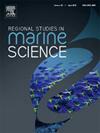Enhancing carbon neutrality through blue carbon fisheries: Spatial analysis in Shandong
IF 2.1
4区 环境科学与生态学
Q3 ECOLOGY
引用次数: 0
Abstract
China has embraced the dual-carbon targets and has consistently pursued a trajectory of green recovery and green transformation since 2020. Actively promoting carbon sink fishery proves to be a cost-effective means of fulfilling the commitment to reduce carbon emissions. This study quantifies the carbon sequestration of blue carbon fisheries in seven coastal cities of Shandong province from 2016 to 2021, delving into their spatial-temporal evolutionary characteristics. Employing spatial correlation analysis, we utilize the spatial Durbin model with a double fixed effect to explore influencing factors and spatial spillover effects. Our findings reveal a fluctuating upward trend in fishery carbon sink within Shandong province, showcasing significant spatial correlation and spillover effects in coastal regions. Firstly, the carbon sink changing trend in coastal cities diverges from 2016 to 2021, with a distribution trend characterized by “more in the east and less in the west”. Secondly, the global Moran’s I indicates a positive spatial correlation in each region, while local Moran’s I identifies three types of spatial agglomeration: H-H, L-H, and L-L. Thirdly, economic development, mariculture structure, and fishery technology exhibit positive direct effects, while the direct effect of fishery labor force is negative according to the decomposed spatial Durbin model. From the perspective of indirect effects, the level of economic development has diffusion effect on adjacent areas, mariculture structure has a negative spillover effect, and the fishery labor force induces a polarization effect on the neighborhood. Based on the findings, this paper proposes suggestions in three main areas: promoting spatial development, optimizing cultivation practice, and encouraging research and innovation.
求助全文
约1分钟内获得全文
求助全文
来源期刊

Regional Studies in Marine Science
Agricultural and Biological Sciences-Ecology, Evolution, Behavior and Systematics
CiteScore
3.90
自引率
4.80%
发文量
336
审稿时长
69 days
期刊介绍:
REGIONAL STUDIES IN MARINE SCIENCE will publish scientifically sound papers on regional aspects of maritime and marine resources in estuaries, coastal zones, continental shelf, the seas and oceans.
 求助内容:
求助内容: 应助结果提醒方式:
应助结果提醒方式:


